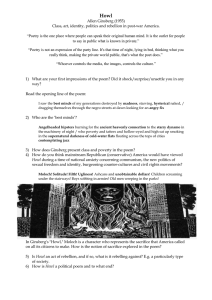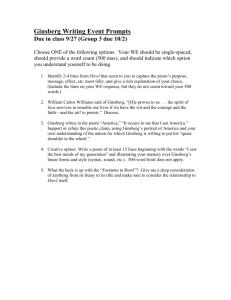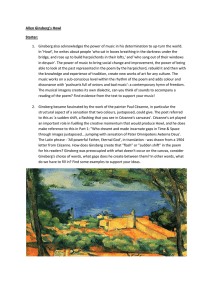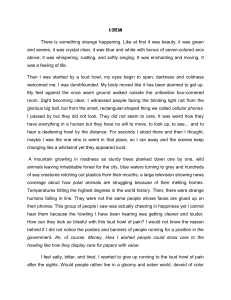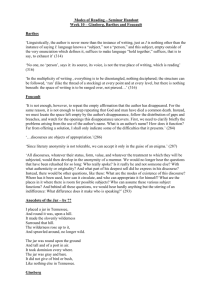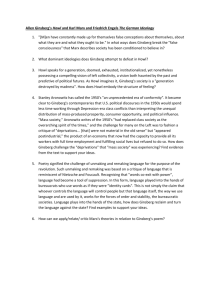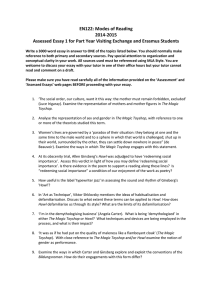‘Art as Technique’ Viktor Shklovsky and 'Howl' Allen Ginsberg
advertisement
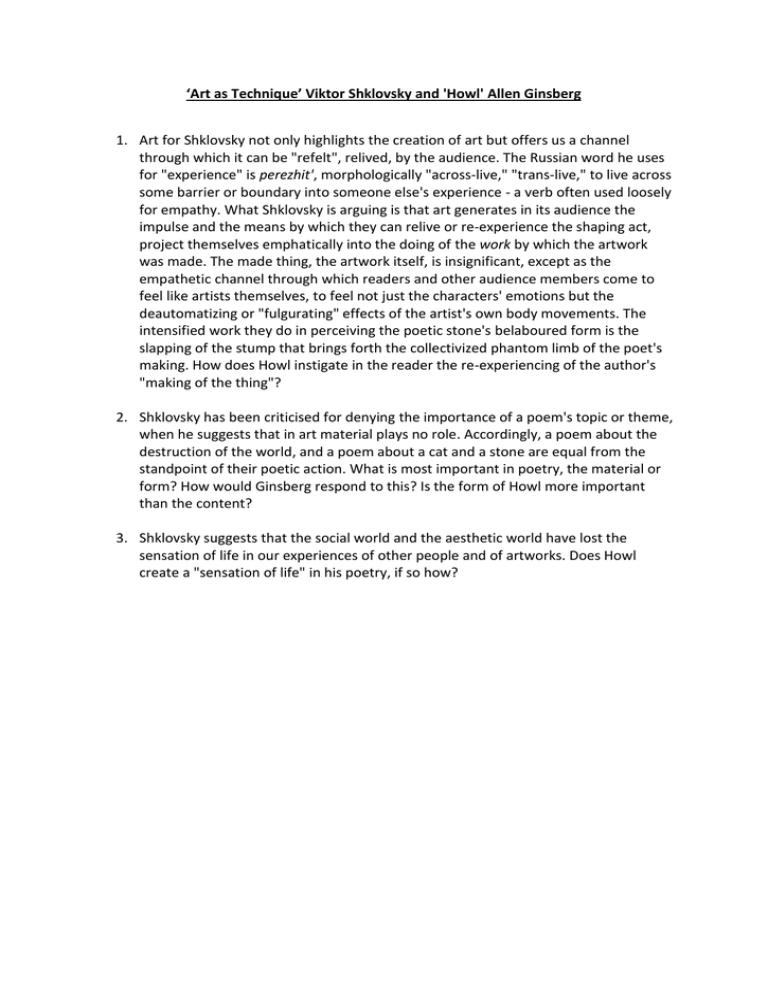
‘Art as Technique’ Viktor Shklovsky and 'Howl' Allen Ginsberg 1. Art for Shklovsky not only highlights the creation of art but offers us a channel through which it can be "refelt", relived, by the audience. The Russian word he uses for "experience" is perezhit', morphologically "across-live," "trans-live," to live across some barrier or boundary into someone else's experience - a verb often used loosely for empathy. What Shklovsky is arguing is that art generates in its audience the impulse and the means by which they can relive or re-experience the shaping act, project themselves emphatically into the doing of the work by which the artwork was made. The made thing, the artwork itself, is insignificant, except as the empathetic channel through which readers and other audience members come to feel like artists themselves, to feel not just the characters' emotions but the deautomatizing or "fulgurating" effects of the artist's own body movements. The intensified work they do in perceiving the poetic stone's belaboured form is the slapping of the stump that brings forth the collectivized phantom limb of the poet's making. How does Howl instigate in the reader the re-experiencing of the author's "making of the thing"? 2. Shklovsky has been criticised for denying the importance of a poem's topic or theme, when he suggests that in art material plays no role. Accordingly, a poem about the destruction of the world, and a poem about a cat and a stone are equal from the standpoint of their poetic action. What is most important in poetry, the material or form? How would Ginsberg respond to this? Is the form of Howl more important than the content? 3. Shklovsky suggests that the social world and the aesthetic world have lost the sensation of life in our experiences of other people and of artworks. Does Howl create a "sensation of life" in his poetry, if so how?
